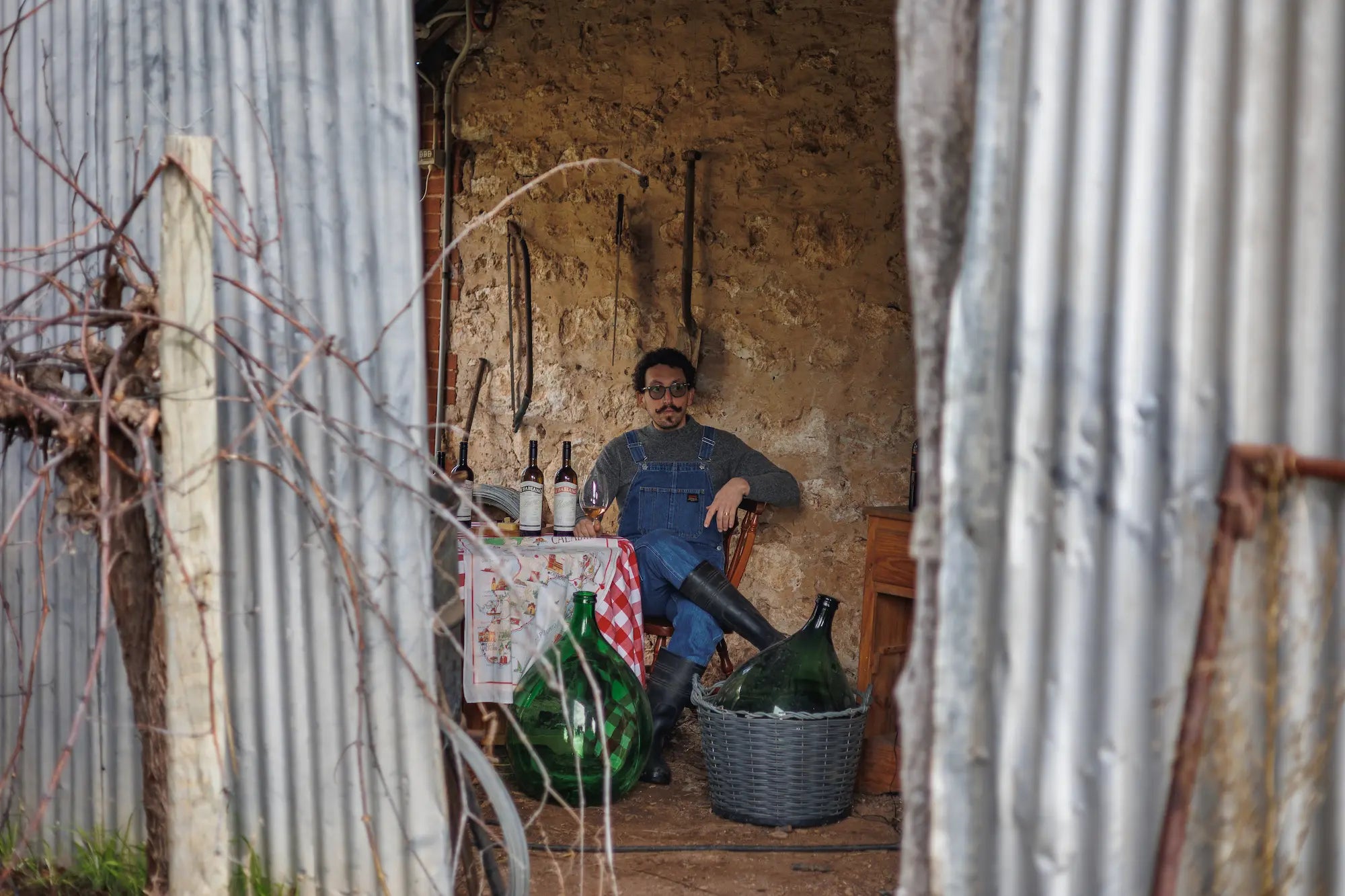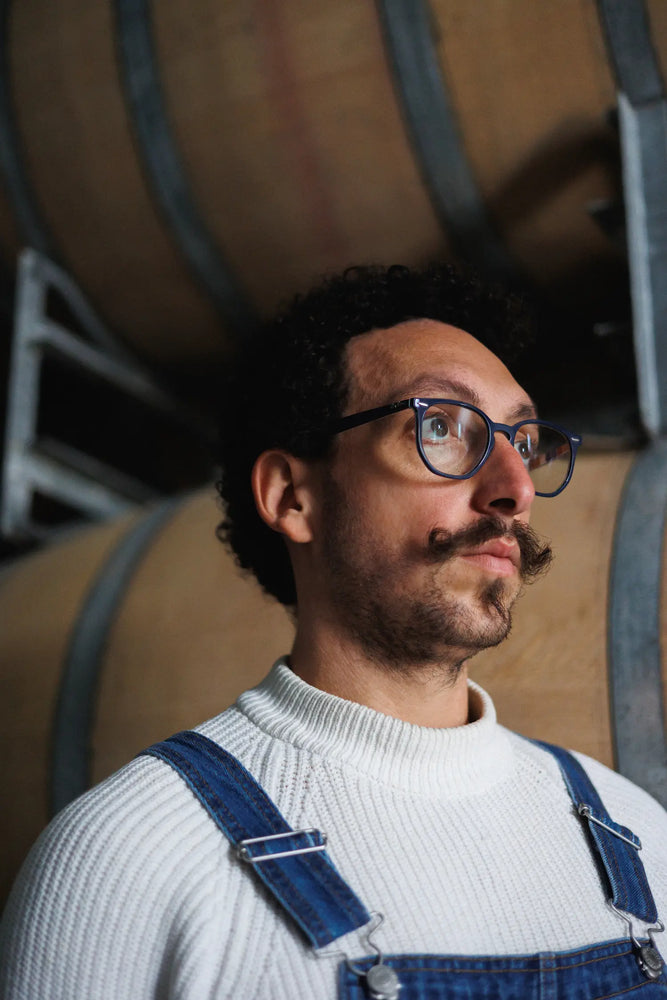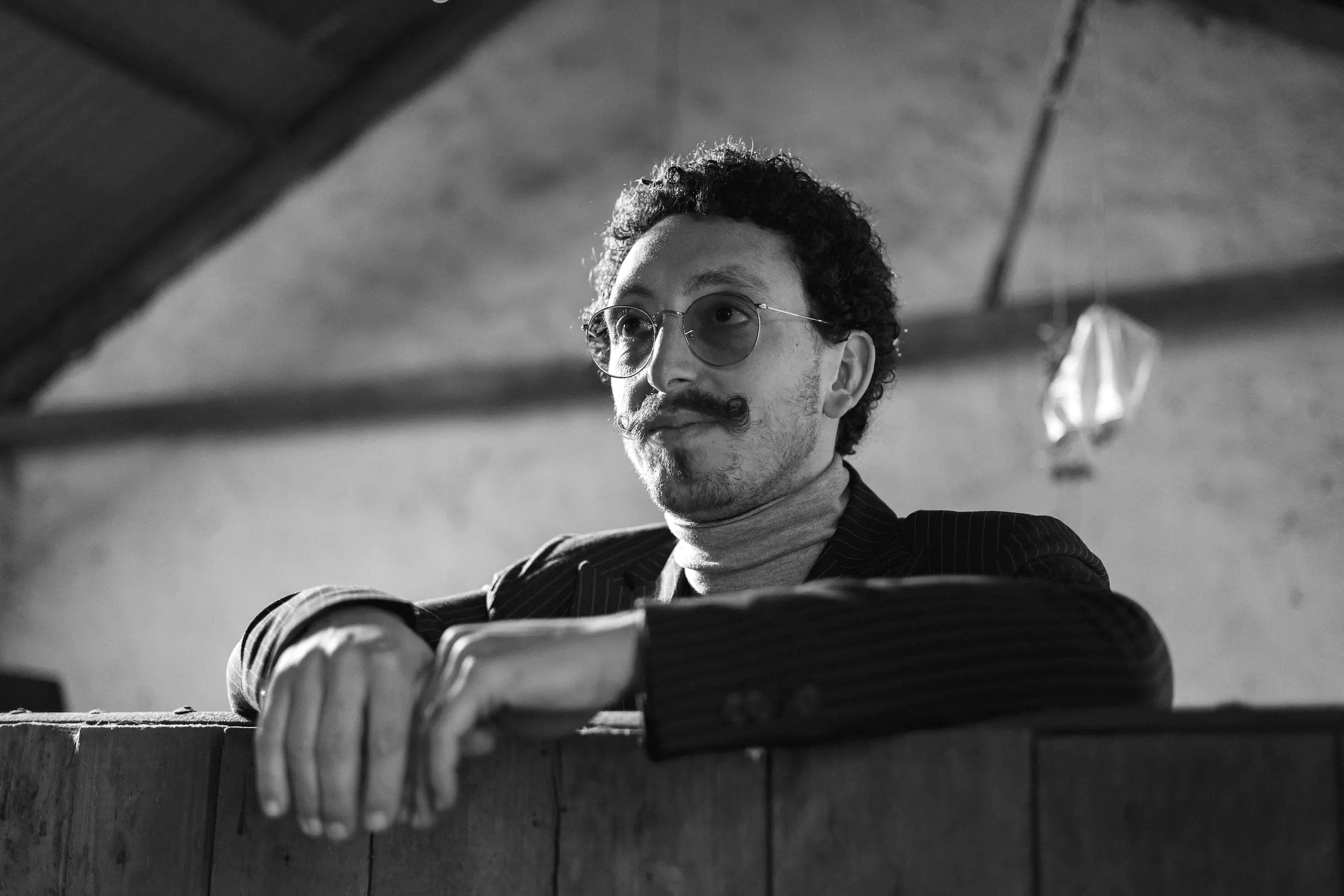
Wine Journal
PRIMITIVOOur vineyard site, located along Tatachilla Road on the outskirts of the McLaren Vale township, consists of a fourteen-row southern-facing block. The rows run from East to West, and according to the McLaren Vale geological map, the site sits on Tatachilla limestone, underneath both North and South Maslin sands. While our adjacent property has Maslin sands, this Primitivo block seems to lack sand. The soil is dark and rich, with deep underground limestone, making it an excellent, if not perfect, site for vines due to its well-draining topsoil and maintained organic matter. The presence of limestone underneath ensures moisture retention while allowing the roots to access essential minerals.
In 2014, we grafted the Primitivo vines onto Sauvignon Blanc, which were initially planted by the previous occupants. Unfortunately, this meant that there was no specific planting strategy on our part. However, we are currently working on planting a new vineyard next door, where I (Fabiano) have incorporated all the strategies I have learned from my various travels. One important aspect is the site's south-facing orientation and East to West rows, which provide less direct sunlight on the vine leaves and greater protection for the fruit. Sunlight aids photosynthesis and sugar accumulation in the berries, and in our hot climate with intense sun, sugars develop at a faster rate than flavours. With this ideal vineyard orientation, we achieve strong varietal flavours at the time of harvest.
Drawing from my experiences in Southern France and Puglia in Southern Italy, I have adopted viticultural practices for the Primitivo. Each vine is treated with respect and individual care. Currently, we employ spur pruning in this block, although my preference leans toward a guyot/cane system. Based on my Italian experiences, I believe that younger canes, which have a smaller carbohydrate bank, accumulate sugar at a slower rate. Cane pruning is a costly and time-consuming process, and I have decided to reserve it for the new vineyard plantings. However, I adhere to a stricter regime of spur pruning in this vineyard than the standard practice in Australia. Each vine has single spurs with two buds every ~eight centimetres, resulting in 7-9 spur positions per vine, or 14-18 bunches per vine before fruit thinning. In contrast, the average Australian spur-pruned vineyard has over 60 bunches per vine, which I believe places too much stress on the plant.
During springtime, when the shoots are 5-10 centimetres in length, I personally thin the shoots. This process involves removing unwanted shoots in incorrect positions or from undesired buds, while promoting the growth of those left behind. It also allows me to correct any spur positions that are not in the ideal location. The benefit is that there will be fewer shoots for the vine to allocate its energy, resulting in fuller growth. Moreover, each shoot has room to grow freely, creating an easier environment for manual work. Shoots that do not originate from the intended buds do not produce fruit. A thinner canopy promotes greater airflow, creating an unfavourable environment for pests and diseases, thus reducing the need for potential sprays. As the shoots grow longer, we use foliage wires to encourage and direct vertical growth, preventing drooping. This is a critical step often overlooked by many Australian vineyards due to its cost. By preventing drooping, we minimize the risk of sunburn on the fruit. When a shoot droops, the bend occurs just above the bunch, exposing the precious fruit to direct sunlight. The droop-prevention technique ensures that every leaf faces the sun, facilitating even photosynthesis and eliminating the need for a few leaves to carry the majority of the workload.
Once the shoots have completed their growth, we perform leaf plucking around the fruit zone, approximately 30-40 centimetres from the cordon. This leaf plucking is done solely on the southern side to preserve the shading from the North. It further enhances airflow within the canopy. The final step before harvesting is the green harvest, also known as fruit thinning. This decision is made during the leaf plucking process and depends on the conditions of each year. If there are too many bunches resting on one another, we remove or thin out some of them to avoid fruit contact that may lead to mold. The main consideration is the total crop load. Based on the year's conditions, we decide whether to thin the fruit back to 1 or 2 bunches per shoot.
These viticultural techniques, although known for their benefits in the industry, are often disregarded due to costs and manpower requirements. However, as a firm believer that great wine is made in the vineyard rather than the winery, I prioritize implementing as many of these techniques as possible to ensure higher quality wine for each vintage.
Once the fruit is harvested, it is up to the winemaker to determine how and when it should be processed. Factors such as vintage, variety, and the desired wine style are taken into consideration. Regardless of the wine or style I am producing, I always insist on early morning hand-picking. This delicate process helps preserve the berries, minimizing oxidation. When it comes to Primitivo, I aim for a minimum ripeness level of 16-18 Baume, which is higher than the average 14-16 Baume for Shiraz and Cabernet. This may seem unorthodox to fellow winemakers in the region.
Typically, when Shiraz and Cabernet are harvested above 14.5 Baume, water is added prior to fermentation to reduce the sugar content and potential alcohol. However, Primitivo requires a riper level of harvest. The natural acid level and pH of Primitivo are maintained at 3.2-3.4 pH, eliminating the need for acid additions later in the production process. The higher sugar levels in Primitivo result in a wine with around 17% alcohol and 4-6 grams of residual sugar. With the roundness provided by the alcohol and residual sugar, the high acid levels contribute to an exceptionally balanced wine. Personally, I have yet to come across a Primitivo from Australia that matches this profile.
Given the high-quality fruit from our vineyard, minimal interference is required in the winery. After destemming, the fruit is delicately crushed to open the berries. Fermentation takes place in small open fermenters, typically with a maximum capacity of 2 tonnes. This ensures a controlled temperature and prevents the fermentation from overheating, which can occur in larger ferments. No water or acid is added. Fermentation is maintained at a temperature of 22 degrees Celsius, with an aim of a 1-1.5 Baume drop per day. This slow fermentation can last up to two weeks. Unlike larger wineries that press the wine off before fermentation completion, we are not constrained by such logistics. During our process, we undertake hand plunging in the morning and night, which provides a gentler approach and achieves a more homogenous mix compared to pumping over with the use of a pump. To enhance extraction and colour depth, we employ enzymes and tannins derived from oak and grapes. This helps bind the anthocyanins, stabilize the product, and enhance the wine's colour. Given Primitivo's characteristics, I find that it does not suit oak maturation in the typical manner. Therefore, our Primitivo has very low levels of oak maturation, with the 2017 blend including only15% of an 8-year-old oak. The current 2018 vintage does not undergo oak maturation, resulting in a bold yet smooth wine.
FIANOMoving on to Fiano, this grape variety is nearly identical in size to Primitivo but is located in a completely different area. The Fiano vineyard is closer to Willunga and is considered to be part of the Christies Beach formation on the geological map, which includes alluvial fan clay. The site is North facing, with rows running North to South. However, this orientation does not align with my vision of grape growing. The Fiano vines are grafted onto Chardonnay, which my grandfather planted, following the belief that North-South rows enhance ripening.
The viticultural techniques used in the Fiano vineyard differ slightly from those employed in the Primitivo vineyard due to the different orientation. In the future, I plan to include Fiano in my new vineyard patch, where I can implement my desired practices. Pruning follows a similar spur and bud count as the Primitivo, and shoot thinning and, when necessary, fruit thinning still take place.
Fiano, like Primitivo and many other Italian varieties, maintains its acidity well into grape maturity. Through an experiment, I have observed that the acids remain at ideal levels (3.3-3.4 pH) as the fruit approaches 15 Baume. In contrast, Chardonnay, similar to Shiraz and Cabernet, experiences an increase in sugar levels and a decrease in acidity too early in the warmer areas of McLaren Vale.
THE LANDWith the high quality of fruit grown in the vineyard, minimal intervention is needed in the winery. The winemaking process for white wine requires more care, as there are no skins and a different set of considerations. Nonetheless, we maintain a simple approach. The fruit is destemmed and gently crushed to open the berries. Fermentation takes place in small fermenters, just as with the Primitivo. Careful attention is given to white fermentation, as the lack of skins and the delicate nature of white grapes necessitate special care.
In conclusion, our vineyard's focus on meticulous viticultural practices, combined with thoughtful winemaking techniques, ensures the highest possible quality for our wines. We believe that the foundation of great wine lies in the vineyard, and our commitment to implementing these techniques contributes to the distinctive character and exceptional balance of our wines.




